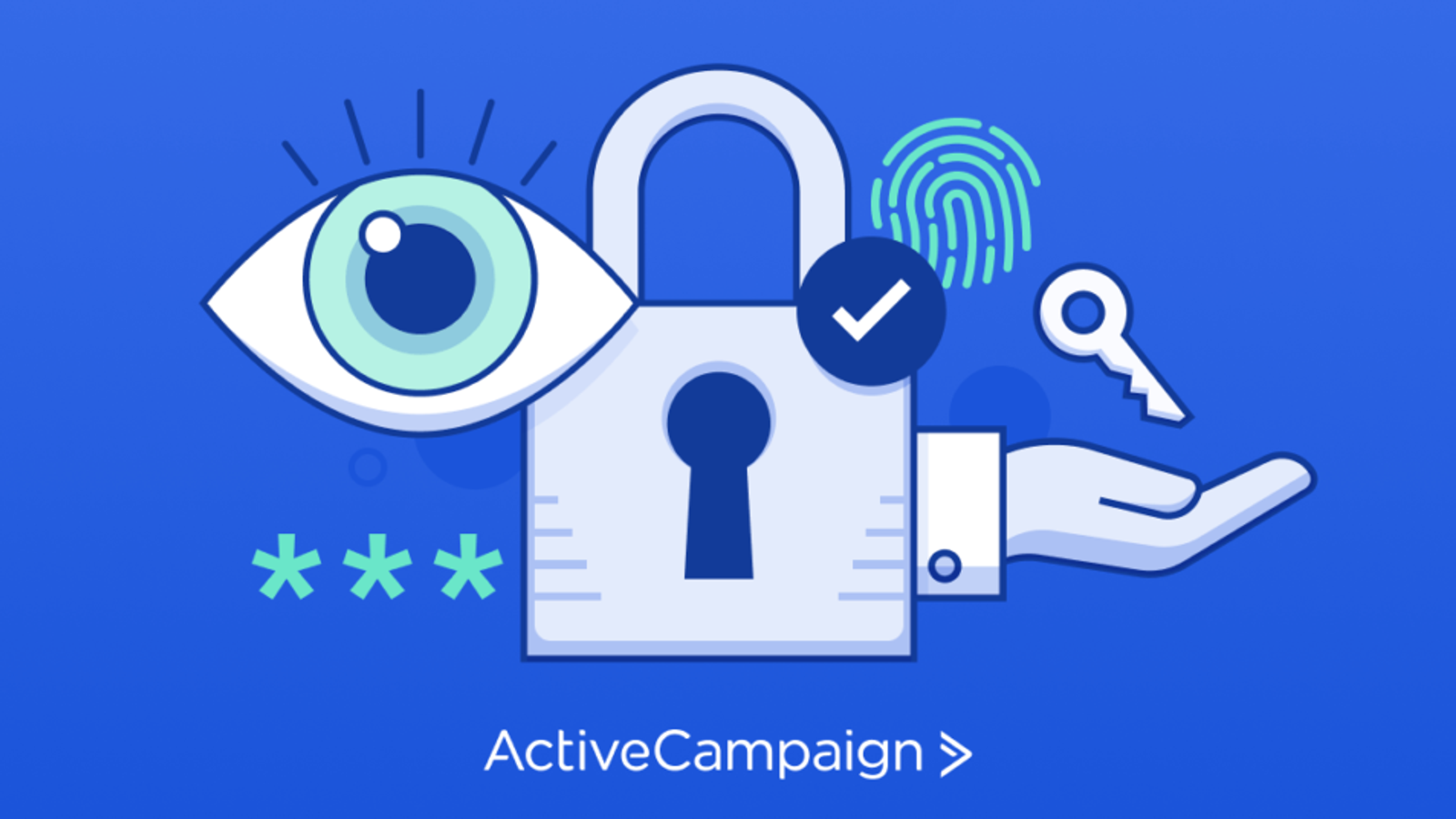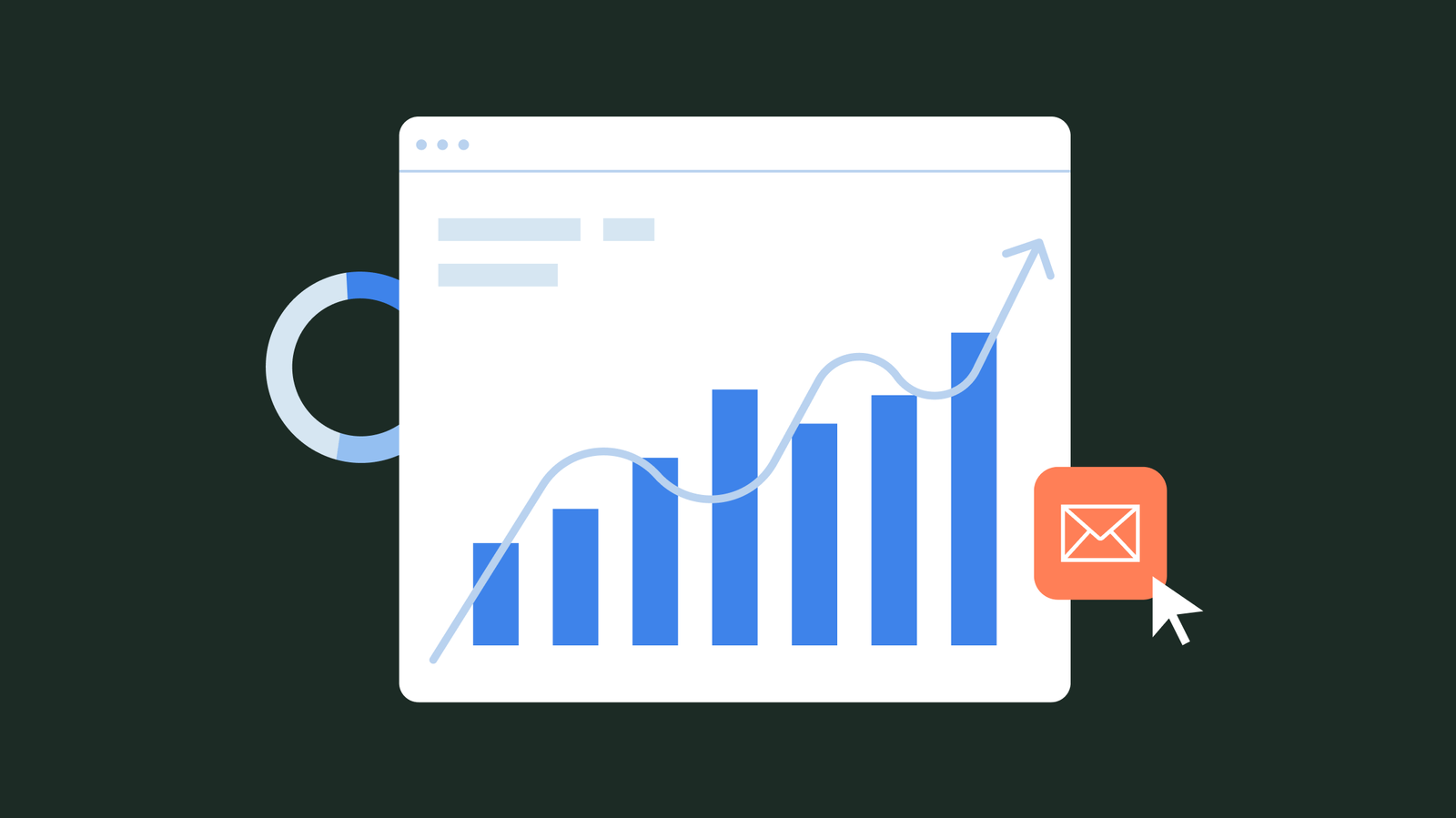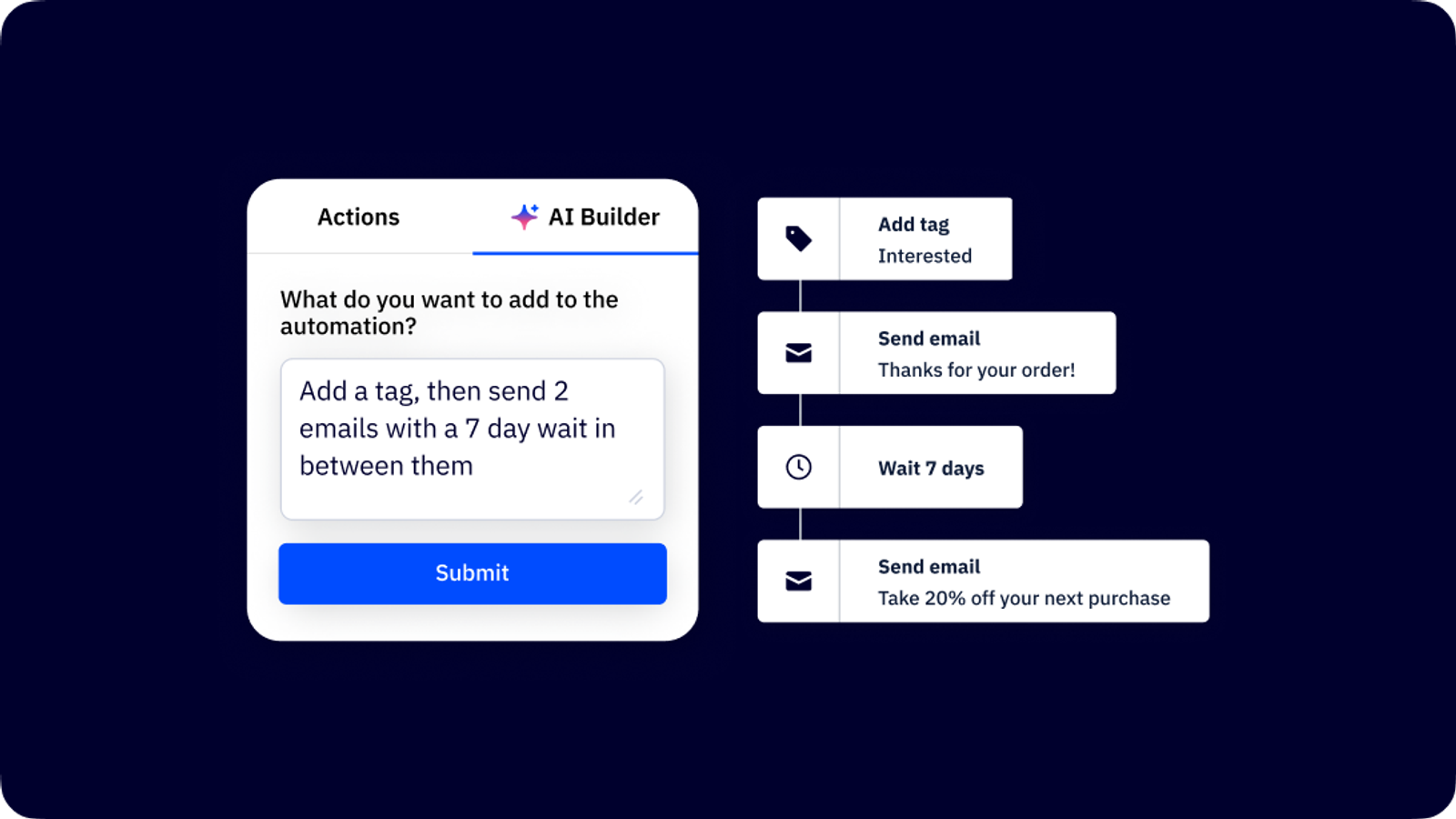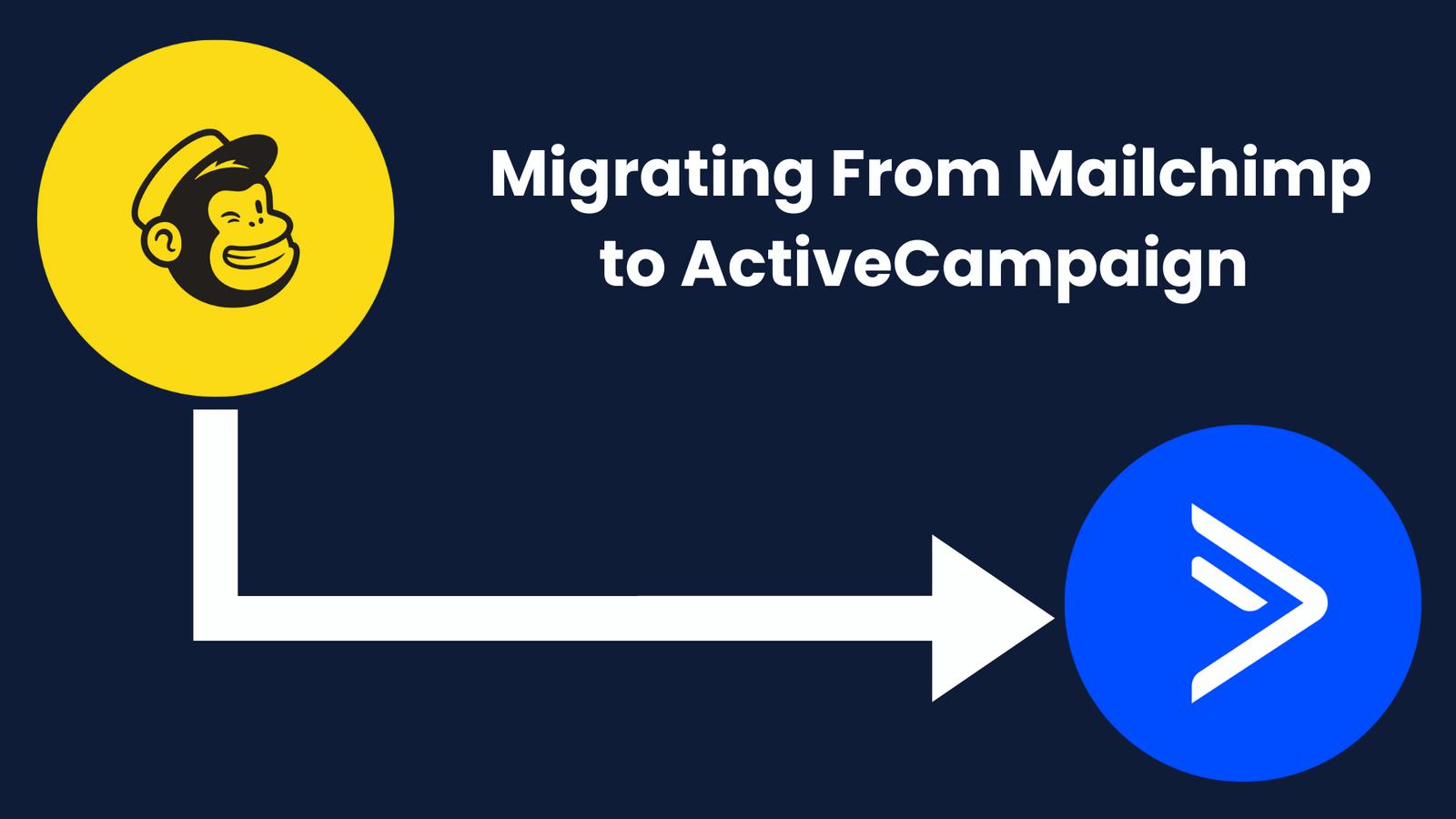New marketing channels pop up every other day, but one channel has remained a powerful constant for years.
Email marketing.
Even as social media, SEO, and video seem to dominate the marketing conversation, the numbers still show that email marketing is one of the most effective marketing channels you can use in any industry.
Like that pair of leather boots you bought in 2008... If it ain't broke!
Still not sure? We’ll prove it.
In this article, you’ll find 31 email marketing statistics that show you how prevalent this channel is and how marketers can use it to reach their goals.
Along the way, we’ll also give you actionable tips to spruce up your email marketing strategy in 2022.
- How consumers use email
- How marketers use email marketing
- How do customers engage with marketing emails
- Email open, conversion, and click through rates
- 3 email marketing strategies that work
- Email marketing trends for 2022
How consumers use email
- More than 90% of people aged 15-64 use email regularly (Statista, 2019)
- There are 4 billion email users around the world in 2021 (Statista, 2020)
- 99% check their email every single day (Optinmonster, 2020)
- More than half of consumers prefer brands that contact them via email (Statista, 2019)
- In 2020, more than 306 billion emails were sent and received each day worldwide (Statista, 2020)
You might think that people are only checking Twitter and TikTok — but in reality, email use is higher than ever.
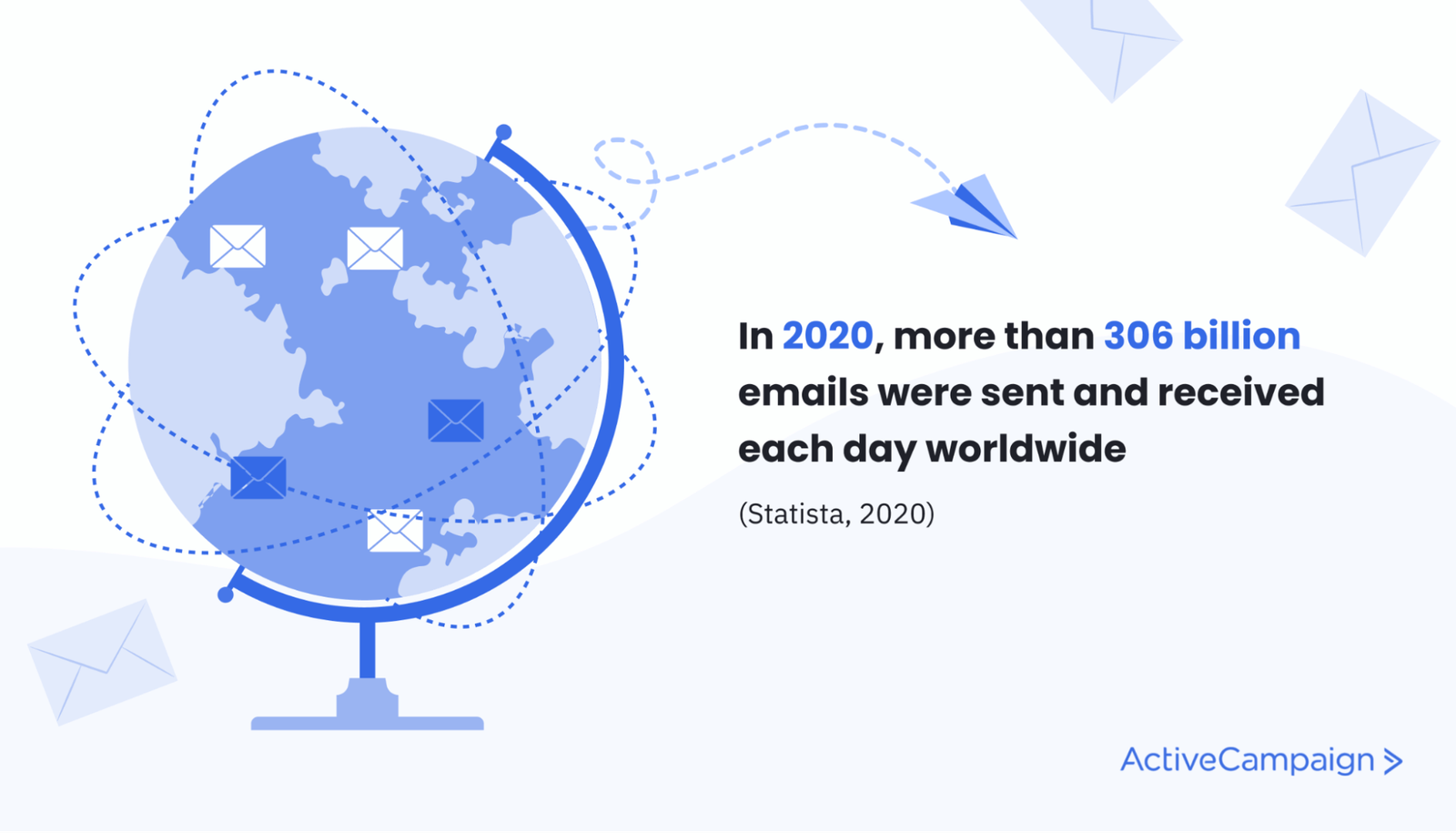
So it’s safe to say that a large portion of your target audience uses email.
But the sheer number of emails sent each day means your target customer is likely overwhelmed. They’ve got a folder full of spam and promotional emails as well as newsletters they really do want to read, but don't have the time for.
Your email marketing campaigns need to cut through all that noise and deliver engaging, personalized messages that get opened and boost your conversion rate — and your bottom line.
How marketers use email marketing
- 85% of B2B companies use their email marketing software as a key part of their content marketing strategy (Content Marketing Institute, 2020)
- 31% of B2B marketers use email marketing to distribute newsletters for generating leads (Content Marketing Institute, 2020)
- 30% of marketers use email marketing to drive conversions (Gartner, 2020)
- 20% of B2C marketers use email marketing to increase customer retention (Gartner, 2020)
To make your emails stand out from all the spam, you need to understand what others in your niche are doing with their campaigns.
Now, you don’t want to simply mimic what your competitors are doing. You can use their tactics as inspiration for your strategy, but you’ll need to go beyond their tactics to bring your own unique angle to email marketing.
Take B2B marketing for example. B2B audiences are made up of business professionals interested in information, so a content-heavy email marketing campaign with tutorials, webinars, and more makes sense for these businesses.
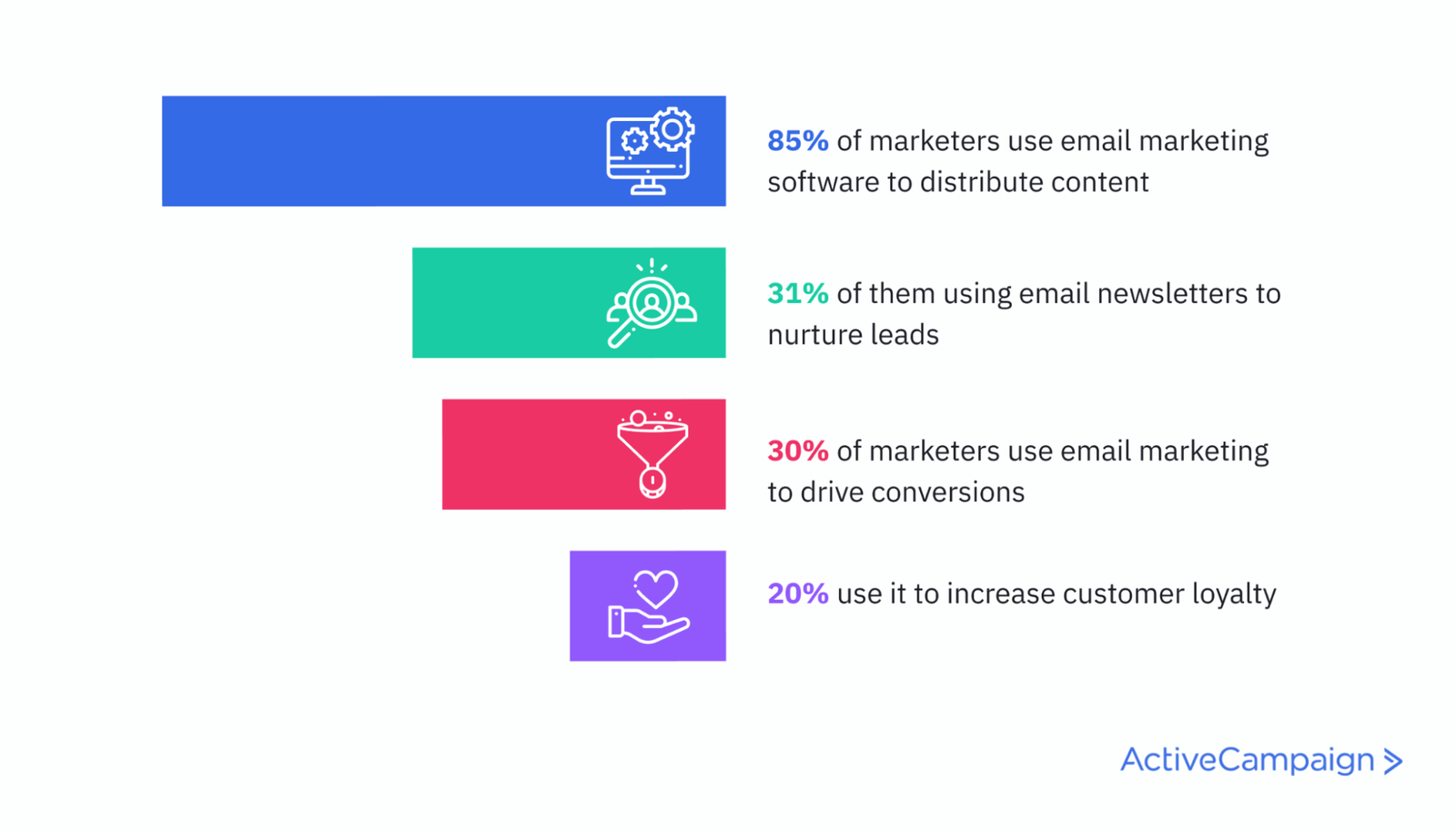
B2C marketers have more variety in their email marketing goals and tactics. They push conversions and customer retention, so strategies like birthday deals and emails work better in this context.
No matter whether you’re a B2C or B2B marketer, you’ll need to think critically about why you’re using an email marketing strategy. With a clear vision for what you want your email marketing strategy to achieve, you’ll find your email campaign returning much better results.
Let’s put email marketing to work for you…
How do customers engage with marketing emails?
When your promotional emails land in your customer’s inbox, what do they actually do with them?
These email marketing statistics will give you some insight into how consumers react to email marketing, so you can refine your campaigns and strategy to best meet their needs and expectations.
Email open, conversion, and clickthrough rates
- Email has a 30.7% open rate across industries (Statista, 2019)
- Email has a 2.9% clickthrough rate across industries (Statista, 2019)
- Email marketing averages a 3.71% conversion rate (Optinmonster, 2020)
While you can use these email marketing statistics as benchmarks for the success of your strategy, keep in mind that actual open, clickthrough, and conversion rates vary widely based on industry and tactic.
For instance, certain types of emails, like abandoned cart emails, tend to have higher conversion rates than a welcome email or something less transactional.
That includes welcome emails, transactional emails, and any other types of content in your campaign.
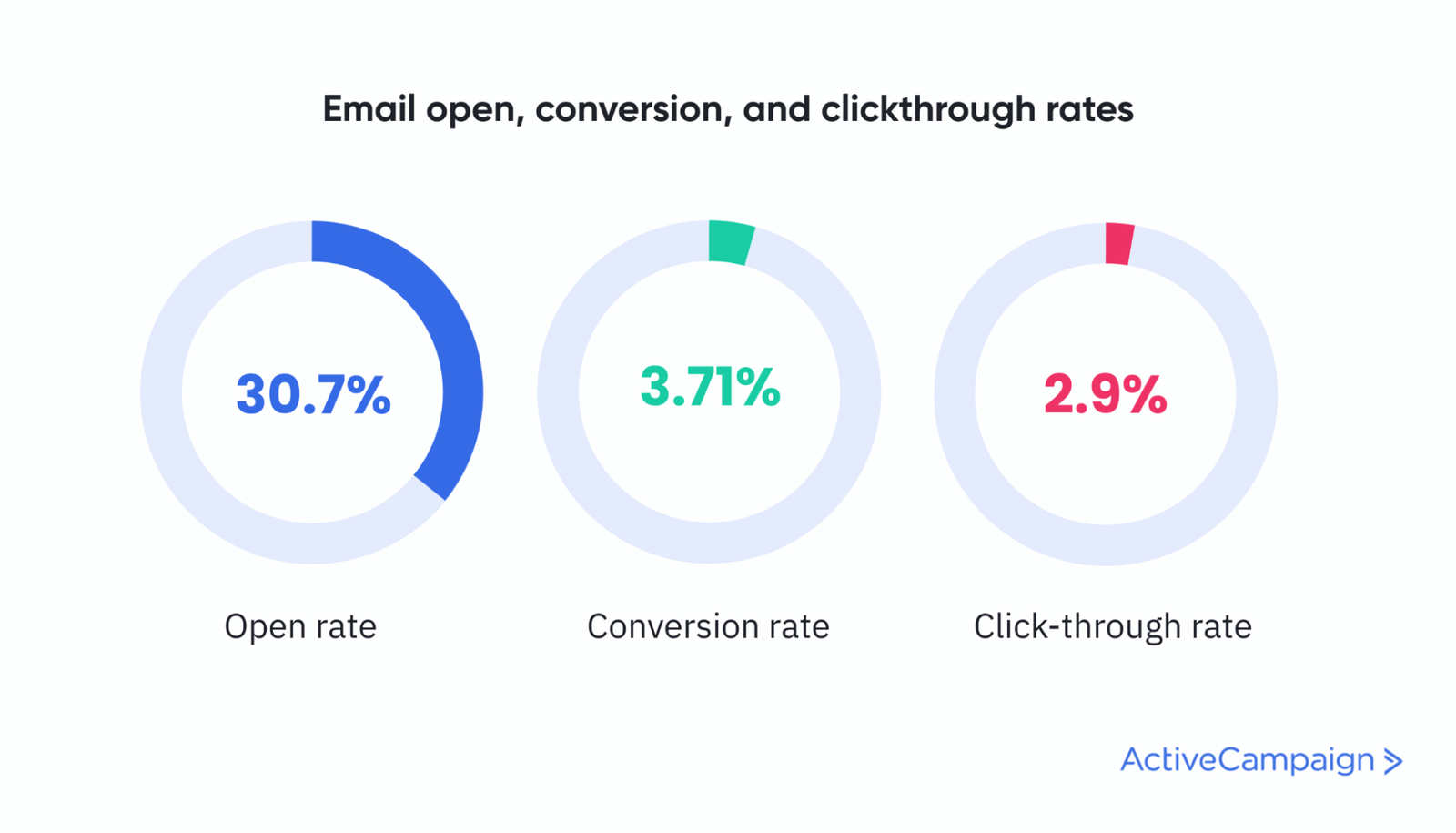
Tactics like personalized subject lines and interactive emails, with features such as videos or tools, can boost your conversion, clickthrough, and open rates, but it’s important to run your own tests on your email marketing strategy to see what works best for your audience.
Video in marketing emails
- 47% of marketers use video in their emails (Statista, 2020)
- 48% of consumers say video impacts their decision to buy when it talks about a product they’re interested in (Marketing Charts, 2019)
Video marketing has been on the rise for a few years now, but it has yet to catch on with a majority of email marketers.
When using video in email, you need to make sure it’s well-optimized for all kinds of devices. When it’s done right, it can have a positive impact on your conversion rate.
Customers will engage with your emails more deeply than before, learning more about your product as they get close to buying.
The best time to send emails
- 51% of emails are opened within seven hours of receiving them.
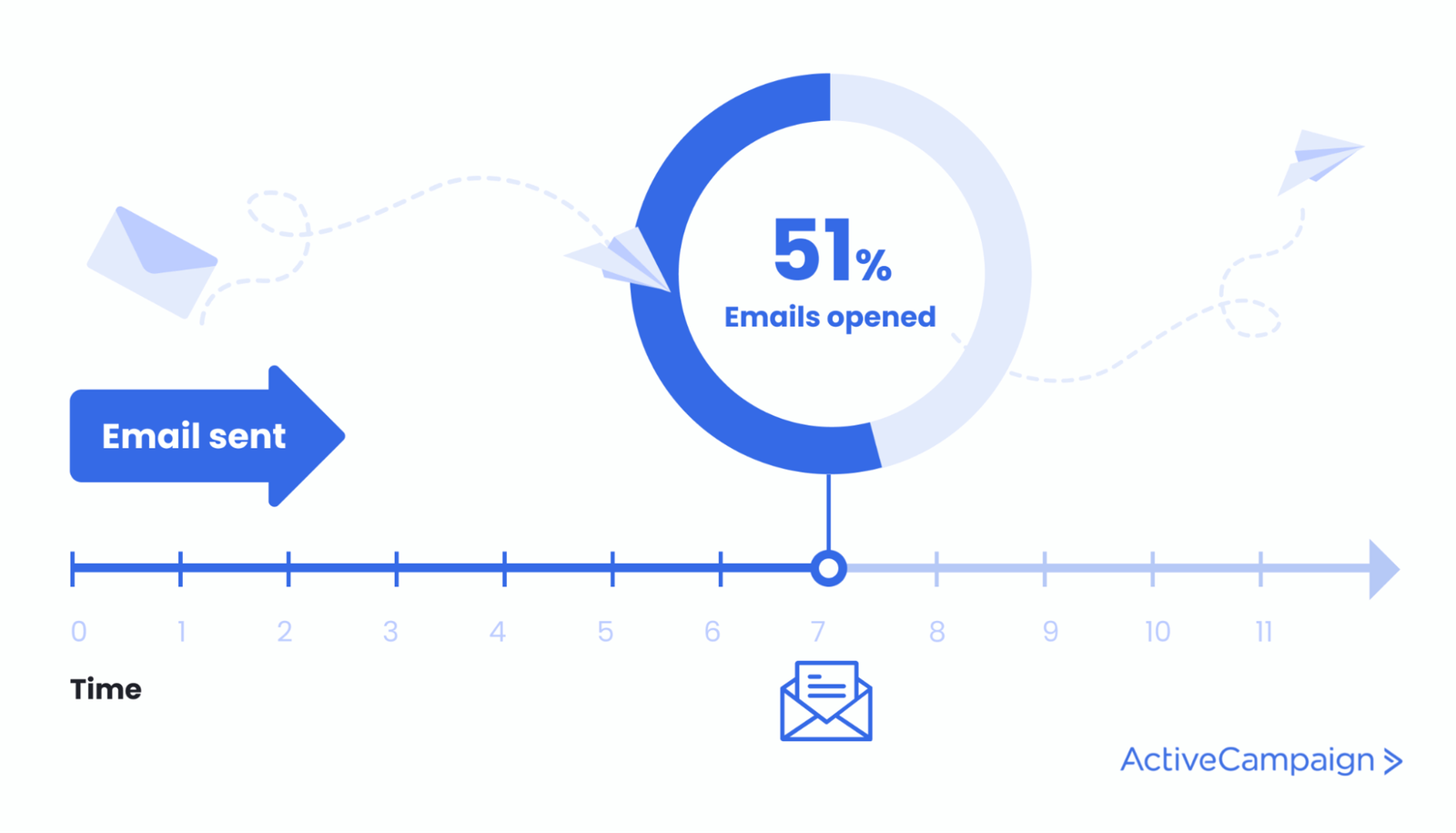
Finding the right time to send your marketing emails is a key part of a strong email marketing strategy.
To help you hone in on exactly the right send time for your audience, think about when your ideal customer is most likely to open it.
You want to time your emails to coincide with consumers’ most active times online. Like most things in marketing, you’ll need to test send times to find the best time for optimal open rates.
You can use ActiveCampaign email automations to run efficient tests.
How effective is email marketing?
- 75% of marketers rate the ROI of their email marketing strategy as excellent or good (Statista, 2019)
- 48% of B2B marketers say email was highly effective in driving conversions (Statista, 2019)
We’ve established that email marketing is still alive and well. And it does produce results.
But you might still be wondering if email marketing is really the most effective way to spend your marketing dollars.
Most marketers would say yes.
It’s clear that email marketing is still a useful and effective strategy — with one enormous caveat:
You have to use email marketing correctly for it to be effective!
That means testing and refining your strategy constantly to achieve the best results and stay out of the spam folder.
3 email marketing strategies that work
Let’s put these email marketing statistics into practice by looking at some strategies that actually work — still backed up by data, of course.
Segmented campaigns
Email segmentation is a critical element of an effective email marketing campaign. If you aren’t already using segmentation, now is the time to start.
With segmented campaigns, you organize your contact list by demographics, interests, or previous purchases. Then, you can send targeted emails to certain segments, rather than writing generalized emails that won’t capture the attention of enough of your audience.
Take a look at the numbers from a case study run by SuperOffice. They ran an A/B test with a segmented email campaign and non-segmented one. Here are the results:
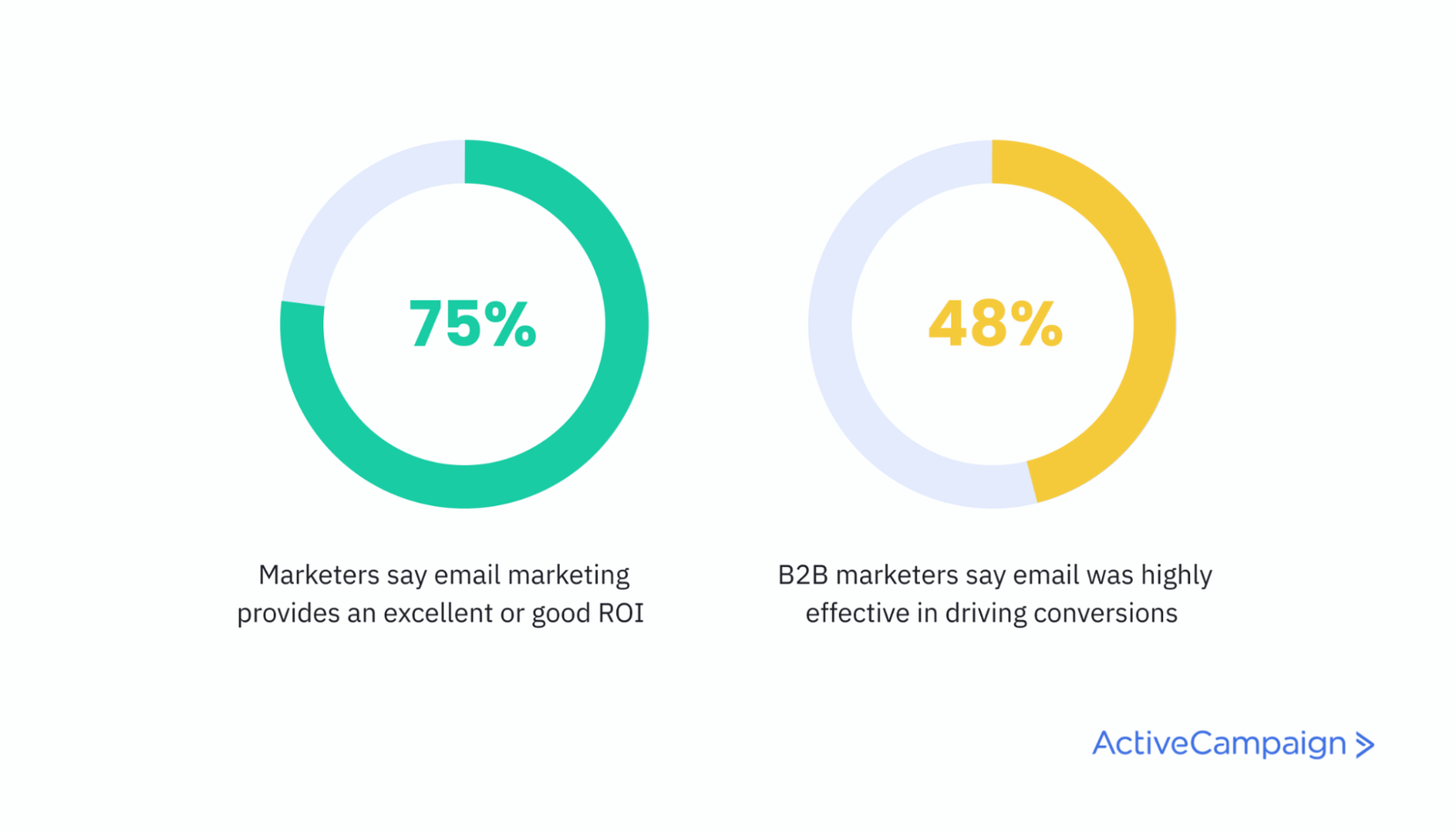
| Open Rate | Clickthrough Rate | |
| Segmented Campaign | 94% | 38% |
| Non-Segmented Campaign | 42% | 4.5% |
While the non-segmented campaign performed better than email marketing standards, the improvement from segmenting their lists is much more impressive.
Automatically triggered emails
- Abandoned cart emails have a 41% open rate (Barilliance, 2021)
- Abandoned cart emails have a 8.13% clickthrough rate (Barilliance, 2021)
- Abandoned cart emails convert at around 10% (Barilliance, 2021)
With email automation, you can set up triggered email campaigns based on customer actions.
This approach accomplishes many of the same things as email list segmentation, because you’re personalizing your emails based on the customer’s actions.
Cart abandonment emails are one of the most common and most effective types of triggered email. They’re usually sent a few hours after a customer has shopped on your site and then left without making a purchase.
As you saw in the abandoned cart email statistics, this strategy yields above average results for businesses that employ it.
Discounts and offers
- 57% of consumers say they like marketing emails that contain offers (Statista, 2019)
- 49% of marketers say discounts and offers were the most effective types of emails (Statista, 2020)
- Only 33% of marketers say advance notice of products or sales is an effective email marketing tactic (Statista, 2020)
Everyone loves a good deal.
Discounts and offers are routinely rated as some of the most effective marketing tactics, email or otherwise.
They beat out other types of email content in terms of effectiveness and keep your customers on the lookout for your next message, hoping for another chance to use their offer.
The data is clear: give your customers discounts via email whenever you can.
Email marketing trends for 2022
If email marketing is here to stay, what does its future look like? Let’s take a look at a few email marketing trends to look out for in 2022 and beyond.
Personalization is losing importance
- Just 21% of consumers say they like receiving personalized emails (Statista, 2019)
- Only 14% of marketers report email personalization as a top capability (Gartner, 2020)
While personalized emails have long been a staple of email marketing strategy, it’s not as important as it once was.
Thanks to data privacy concerns and some other factors, consumers and marketers alike are placing less emphasis on personalization in the shopping experience.
This doesn’t mean you should abandon personalization completely. Instead, you need to use it carefully. You can learn more about the right balance of personalization with our guide to email marketing personalization.
It’s also important to be transparent about what data you collect from customers and how you use it. This builds trust among your customers, encouraging loyalty and retention.
Mobile email continues to rise
- 83% of US consumers are mobile internet users, and that number will only get higher. (Statista, 2020)
Email users continue to check their email more often on mobile devices than on desktops.
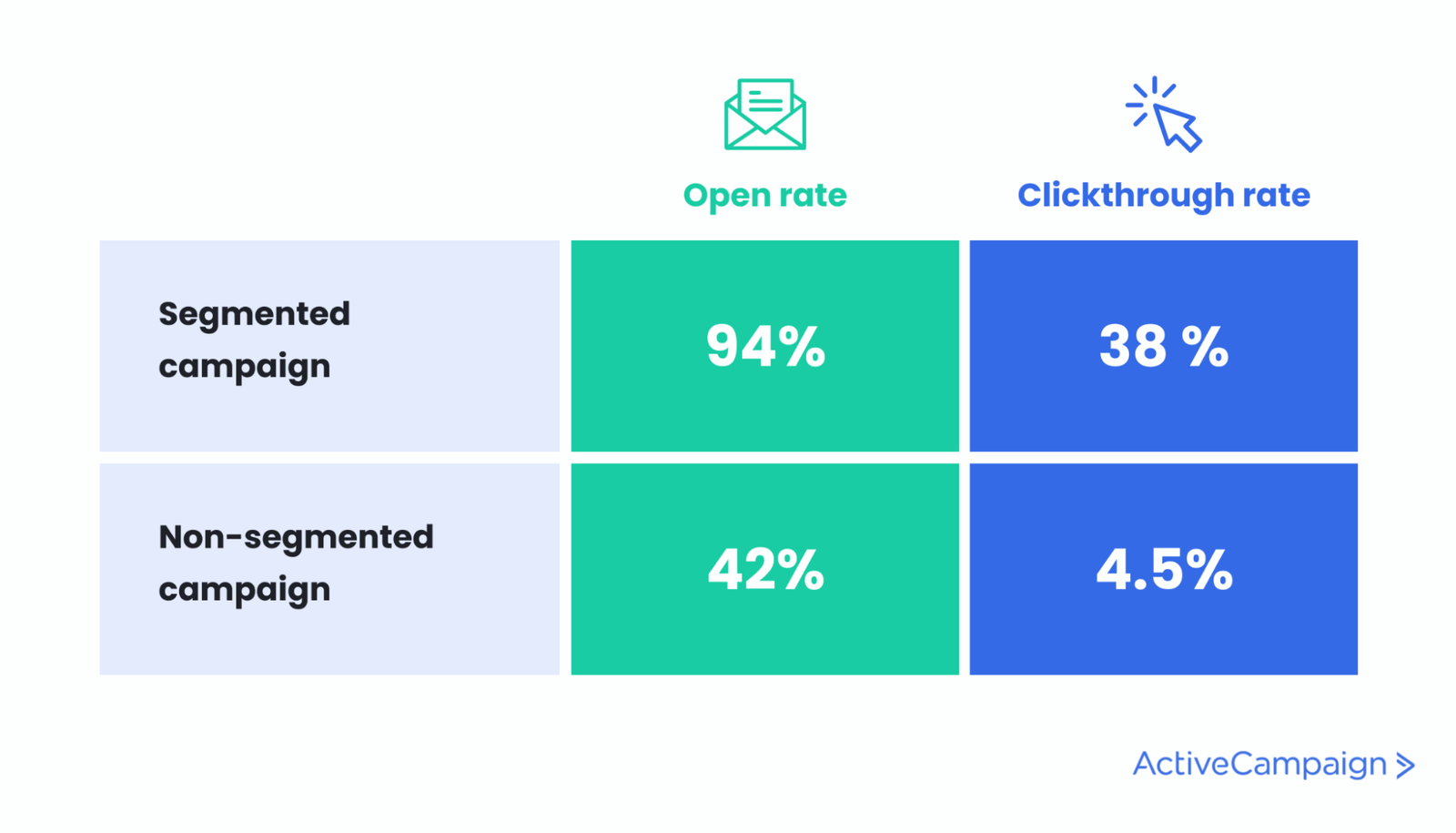
That means your marketing emails need to be perfectly optimized for mobile devices — every single time.
But the prevalence of mobile impacts more than just your email marketing. Your entire site, from browsing products to making a purchase to contacting customer service, needs to be completely mobile-friendly.
And since Google considers the mobile version of your website as the primary one, mobile-friendliness can impact your SEO and other marketing channels too.

AI is here to stay
- 51% of ecommerce stores use automation and AI across their sales, marketing, and customer support (Semrush, 2021)
- 34% of marketing leaders believe AI is the biggest game changer for customer experience (Semrush, 2021)
Artificial intelligence technology for marketers only continues to get more advanced, so you’ll see it more in 2021.
While AI has most often been used in email personalization, machine learning technology offers more ways to leverage AI in your strategy.
For instance, you can use AI to write predictive content or anticipate where and when you should send your next email campaign.
Improve your email marketing strategy for 2022
Email marketing remains a highly effective way to engage consumers.
By understanding these email marketing statistics and putting our takeaways into action, your email marketing will remain competitive in 2022.
To boost your email marketing strategy, speak to one of our email marketing experts today.



